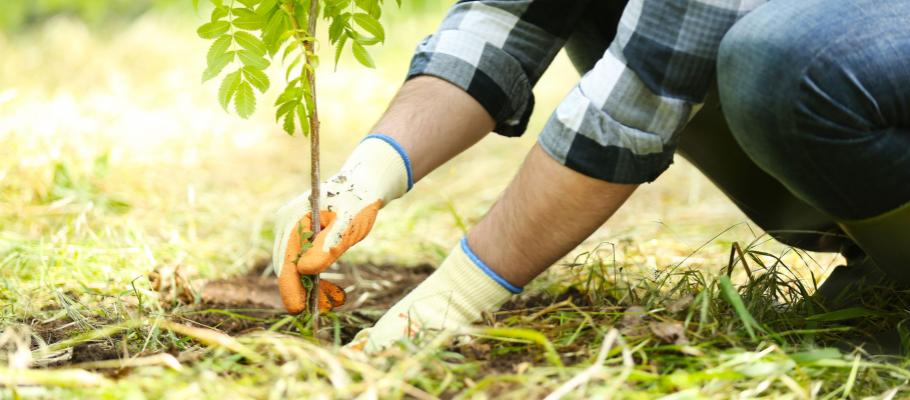Now that fall is looming on the seasonal horizon, lots of us are itching to take advantage of the cooler weather and sale prices by planting a tree or shrub. But we all know that autumn means winter is right around the corner. You may be wondering. When is it too late to plant trees and shrubs in southern Wisconsin?
Planting in spring is great, but there are plenty of experts who believe that fall is nearly as good in the upper Midwest since plants establish quickly when they aren’t supporting foliage or developing flowers. At this time of year, a plant’s water requirements lessen and the cooler soil temperatures are especially favorable for root growth.
A good rule of thumb is that as long as there are leaves on other trees in your landscape, it’s safe to plant new ones. If you like gadgets and want to be very sure, get a soil thermometer and check soil temperature. If it’s above 50 degrees, you can go ahead and plant any deciduous plants. These are the ones that shed their leaves every fall. This process is called leaf senescence and it allows plants to focus their energy on root development.
Evergreens, however, hold their foliage year-round and need all of the nutrients that can be accumulated before the ground freezes. Try to get them in the ground before the soil cools below 60 degrees. According to 5 year averages, that usually happens in early October. Currently, soil in our area is just under 75 degrees, so you have plenty of time.
Many gardeners agree that fall planting can give trees and shrubs a better chance to develop roots, but do they survive the winter months as well as those put into the ground in spring? A lot depends on how the plants were cared for during the summer. While many of us are working in air conditioned offices, the Garden Center staff is out on the lot hand watering each tree, shrub and perennial on every one of those above 85 degree days. That’s in addition to the regularly scheduled, automatic irrigation. And they are constantly assessing plant health by monitoring fungal issues, pruning broken branches and dead-heading spent flowers. These are the kinds of plants that you want to bring home in September and October. Wherever you’re shopping for trees and shrubs in late summer and early fall, take into consideration their current health. A bargain is not always a bargain.
Another big factor in susceptibility to winter damage is the planting process itself. Some of the recommended steps, like teasing roots and applying root stimulator, which are often skipped in the mad rush of spring, become critical in the fall. Plants will do much better with a thick layer of bark mulch applied over the root area, and they’ll require regular watering right up until the ground freezes. If your gardening modus operandi is to plant and forget, autumn planting may not be a successful activity for you.
So make sure that you give any autumn-planted trees and shrubs every chance for success. Dig a proper-sized hole, amend your soil, tease out those compacted roots and water deeply every couple of weeks until Thanksgiving. Then put your hoses away and dream of bright new leaves unfurling next spring.

